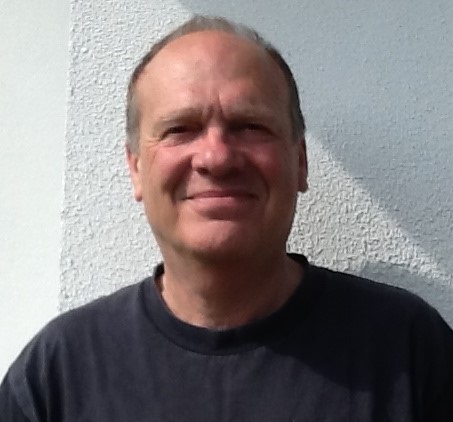- Operations
Leading Strategy Execution
John O’Dwyer and Kelly Murumets discuss project and strategy execution, the focus of Rotman’s timely GettingItDone® workshop
Although rarely taught, the path to successful execution is one that can be learned. It is also satisfying and rewarding, and one of the most critical and exciting aspects of leadership. An excitement that is embodied by professors John O’Dwyer and Kelly Murumets, the co-leaders of Rotman School of Management’s one-day executive workshop GettingItDone®—‘It’ being any leadership objective: strategy, project, sales target, culture change, restructuring, employee engagement and more. The workshop, which is exceptional in unashamedly concentrating on execution, is based on a popular MBA elective established at Rotman by O’Dwyer 22 years ago.
This is about getting it done in the real world. And that's why we say it's a doing course, not a memorizing course.
O’Dwyer emphasizes the practical, as opposed to theoretical, nature of the workshop and the MBA elective, and the thinking behind them. “We're not the sage on the stage. We’re the guide on the side. This is about getting it done in the real world. And that's why we say it's a doing course, not a memorizing course. It's experiential learning.” A course originally for MBA students works for executives because of the needs-based analysis that both professors practice, acting as coaches and consultants, “to know the people in the room, to customize it and make it appropriate for them.”
There are theories behind this very practical method of learning. O’Dwyer and Murumets use up to 25 different management tools taken from the key management thinkers of the past few decades—from Peter Drucker to Roger Martin—to create a GettingItDone® management system. Which tools are used and how is defined by the audience. Central to both the MBA elective and the executive workshop the participants apply what they are learning in running a simulation company.
...........................................................................................
Join Rotman School of Management's GettingItDone® workshop to master project and strategy execution
Date: 5 May, 2023
Format: Online or in-person | Location: Your place or Toronto
..........................................................................................
For the executive workshops, explains Murumets, “it depends who the client is, and what is their ‘It’. We curate the course depending on the audience and what they want to get done.” With executives a certain amount of unlearning is often involved. “The beautiful thing that John and I have created over the last couple of years,” she recalls, “no matter if it's MBAs or executives in the room, is a process that starts with self-awareness and self-reflection.” This process reveals a range of insights from the participants that form the basis for class discussion around the impact these insights might have in the real world.
The GettingItDone® management system
Taking from Peter Drucker, the core themes of the GettingItDone® management system are: purpose, vision and values. There are then four key elements to the system that intersect with that core: strategy, deployment, managing for results, and continuous improvement. Essentially, the GettingItDone® management system involves organizing 25 proven management tools around these four basic elements.
There are many managers who are pretty good at expressing the vision and the purpose, but when it comes to deployment, they get woolly and a bit lost. Murumets quotes an example from her experience in running a publicly traded telecom business in the US, “Our focus and direction was only truly deployed and aligned when the receptionist I had in San Diego understood her role. She understood how she helped her team and the organization be more effective. And she understood her role in our delivering on that purpose, and ultimately, the vision.” You only have alignment when it goes to everyone in the entire organization. “Lots of CEOs think they've got it, yet when you ask somebody deep in the organization the reaction is often ‘Well, that's maybe what he says. But let me tell you what really happens here’.”
A culture of accountability
For O’Dwyer a culture of accountability is essential to getting things done—accountable not just in a negative sense but being accountable for the good and the bad. “In our experience, high performers want to be held accountable. They want to know, what’s expected of them.” The process he advises is that objectives are established in a team setting. “So, it's not just the boss handing it to an employee. And it's not just the employee creating their performance agreement out of nowhere. It's created in a team setting—the manager with their direct reports—so there's horizontal and vertical alignment.”
Once people have a performance agreement, they need a leader who holds them accountable. He or she should also be “a great coach, mentor, and believer in training and self-reflection, who helps them be the best they can be,” declares O’Dwyer. “That's what I was always striving to be as a CEO, to help my people deliver beyond their wildest dreams.” High performers want to be held accountable, want their manager to help them be the best version of themselves, and expect to hear suggestions on how to improve. However, they also value autonomy and typically they will already know what they need to improve on, through self-reflection. Furthermore, as O’Dwyer points out, “when you have high performers peer pressure is the best pressure. They’ll know anyway what needs to improve, and it’s helping them actualize that, so at the end of year performance review there are no surprises.”
Owning our decisions
Strategy execution, particularly in a fast-changing business environment, requires clear and conclusive decision making. “There are basically five decision making methods,” states Murumets. “A leader chooses which to use based on the situation. No one decision making method is better than another. They're completely situationally dependent.” If for example a leader has all the information they require they should just take the decision themselves and get on. If it's a really huge decision, requiring buy-in and commitment to make it happen, then others have to be at the table to work through to an agreed conclusion. Other methods fall in between those two.
“If you made all of your decisions expecting buy-in you and your whole organization would be stymied,” warns Murumets. “You won't be able to make any progress anywhere and you would take almost zero decisions.” Self-awareness is perhaps the most important prerequisite to effective decision making along with understanding the situation and having some courage. “Then use the decision making method that's appropriate for that situation. And lots of times people just don't even think about the situation. They just invite everyone to the meeting.”
O’Dwyer points to ‘ownership’ as another aspect of decision making. “Clarifying who's the owner for each process, and each decision, is critical.” Organizations including governments don't like to assign owners, and people don't always like to take ownership, either. “Yet,” says O’Dwyer, “if the culture is a healthy one, people actually do like to take ownership. Where people don't like to take ownership is where it's a punitive, finger pointing culture. In these cultures, eventually everyone puts their head down, there's no innovation, and no one takes ownership.” In a healthy culture people do not fear to fail, but see trying and failing as a key to learning and to progress.
Getting the team on side
Strategy execution requires motivating and leading others. For the CEO, who has authority over everything from vision to culture, this is reasonably straightforward, but for the middle-manager who has to look to the boss for direction and take decisions for his or her team that are aligned with the corporate culture, this can be more complicated. The middle manager will want to be courageous but without being reckless.
Situational management is at the core of everything that we teach. There's no one right style, there's no one right decision making method
“Lots of people that we work with, they're very good at their job, so they get promoted. They then find themselves leading people, and no one's ever helped them lead people, no one's given them any training,” observes Murumets. Here the GettingItDone® management system offers a series of models to follow, from how to give and receive feedback, to managing performance via checkpoint meetings and formal reviews.
Perhaps the most welcome of these is a model for coaching—as many people can feel intimidated by the idea of being a coach. These models are precise yet as she reminds us, “Situational management is at the core of everything that we teach. There's no one right style, there's no one right decision making method, there's no one right way of doing really anything. It depends so often on the answers to: What is going on? Who are we talking about? What's the culture? What style does your boss have? What is it you're trying to achieve with your team?”
About the workshop
The GettingItDone® workshop is run in-person in Toronto or at a client location for in-house programs, and also separately as a 100% online offering. O’Dwyer and Murumets are confident that with the experience they have gained through the COVID pandemic the online version is as powerful as the face-to-face one, and of course online opens the opportunity to a wider international audience.
“It's much better to have a diverse population, from across the country and around the world,” says Murumets. “And our teaching process works equally well online or in-person.”
• • •
“No plan survives first contact with the enemy,” observed Carl von Clausewitz, the Prussian general. What is true in war has echoes in business—studies show that the success rate of strategy execution is extremely low. So, it is surprising that few executive education courses focus on execution and implementation.
At a time when outside forces can be powerfully turbulent and the business environment is beset with uncertainty, the confidence to be able to ensure the effective execution of agreed ways forward is crucial—which makes the GettingItDone® initiative particularly timely and welcome.
……………………………………………………………………………………………….....

John O’Dwyer PhD is an Adjunct Professor and Executive-in-Residence at the Rotman School of Management, University of Toronto. Since 2002 he has been teaching in Rotman’s Executive Education programs, as well as GettingItDone®, a final-year MBA elective course.
Over the past thirty years, John’s professional career has spanned financial, human resource, and operational and strategic management areas. He has held a variety of management positions including President, CEO, and business owner.
John is currently a partner with Strategic Advisory International, a management consulting firm that focuses on providing client organizations with management tools that enable them to transform their winning strategies into genuine results. In his role as Partner, John works with a wide range of clients from Fortune 500 corporations to smaller entrepreneurial and high-tech organizations, where he is a trusted advisor and execution specialist.

Kelly Murumets is Adjunct Professor at the Rotman School of Management, University of Toronto. Kelly is a passionate leader who has a history of effecting positive change in organizations. She is recognized for being a visionary, having integrity, developing sound strategies, taking courageous decisions, building teams, motivating people, creating magical cultures, driving to success, and getting it done.
In a wide-ranging business career Kelly has been President/CEO of Tennis Canada; President/CEO of ParticipACTION the national voice of physical activity and sport participation in Canada; and President/COO of C2 Global Technologies Inc. (Formerly Acceris) a publicly traded $100 million, 300-employee, U.S.-based telecommunications service provider.
Rotman School of Management is Canada’s leading business school and has Canada’s largest group of management faculty. It is home to some of the most innovative research institutes in the world
ARTICLES YOU MIGHT LIKE
BOOK REVIEW
A practical guide to sustainable corporate sourcing and running a scandal-free supply chain
DEVELOPING LEADERS QUARTERLY MAGAZINE AND WEEKLY BRIEFING EMAILS


































